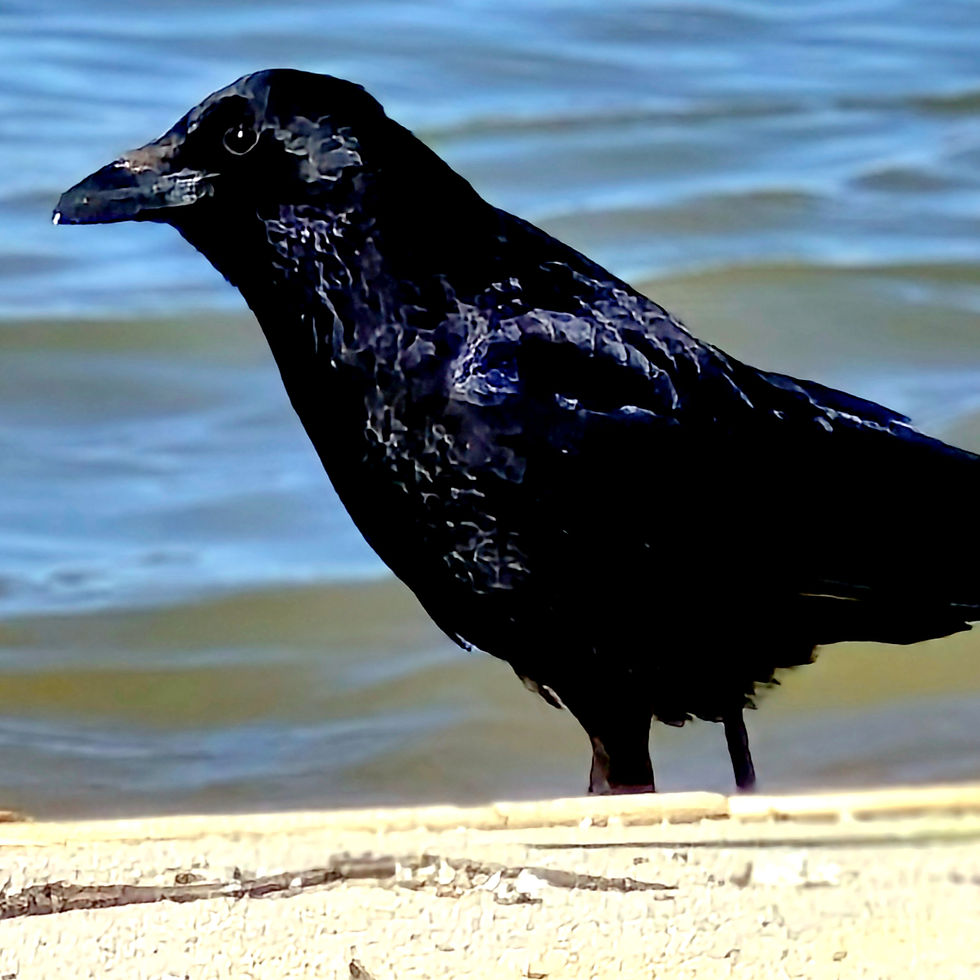20) Explorers
- O Peregrino

- Apr 18, 2024
- 13 min read
Nature is beauty. We love her. However, we are not technically equipped for good nature photography. This includes capturing small subjects like insects or flowers, as well as wildlife photography. While you can take nice shots with a smartphone, when you are traveling with limited time like us, you often find yourself in a rush. Unfortunately, we only managed to take a few photos, which we will now share with you.
Plants
Plants are vital for human survival and well-being, providing the oxygen we breathe, the food we eat, materials for shelter and clothing, ingredients for medicines, and helping to regulate the climate by absorbing carbon dioxide and preventing soil erosion. They form the foundation of ecosystems, support biodiversity, and offer numerous psychological and spiritual benefits, contributing to human health and happiness.
The Daisies

The daisies (Bellis) are a genus of plants in the daisy family (Asteraceae). The approximately twelve species are mainly distributed in the Mediterranean region; only the common daisy (Bellis perennis) also occurs in Central and Northern Europe and is a neophyte in many parts of the world; it is also the best-known species of this genus. There are varieties of the common daisy, also called the 'Grand Daisy', that are used as ornamental plants.
1. Day’s Eye. If you’ve ever wondered how the daisy got its name, wonder no more. In Old English, the flowers were called ‘dægeseage’, which means ‘day’s eye’, referring to the fact that most daisies open their petals as the sun rises and close them as the sun begins to set.
2. Some daisies use camouflage. Of course, not every species within the daisy family closes its petals at night. But those that do, do so as a form of camouflage. Researchers from Stellenbosch University, South Africa, found that many herbivores are unable to distinguish between leaves and petals when the flowers close. As most herbivores prefer the protein-rich flowers, if they can see them they will eat them. But the plants need their flowers for reproduction, so they protect themselves when pollinators are not around. Others simply bloom in colours that herbivores can’t discriminate.
3. Daisies are comprised of many flowers. You might not think it, but the daisy is made up of many, many tiny flowers. With the large external petals, and a bight centre comprised of scores of tiny flowers all pressed together. The term for this is a ‘composite flower’.
4. Daisies were traditionally viewed as a gift to bereaved parents. According to Celtic mythology, whenever a child died, God would sprinkle daisies over their grave as a compensation to its parents. This may have had its roots in the fact that in Norse mythology, the daisy is the sacred flower of Freya – goddess of love, fertility, battle, and death.
5. He loves me, he loves me not… Going back to that flower within a flower thing. It’s because daisies are composite flowers that they are so strongly associated with love. The external petals seamlessly unite with the many petals of the internal flower, just as couples should unite in a lasting relationship. And that’s why the poor daisy is such a popular choice for pulling apart as a means of divination by the lovelorn.
6. He loves me, he loves me not… a lot. And on that, the poor old daisy was used and abused for that very purpose for the world’s largest game of ‘he loves me, he loves me not’ in Milan in 2009. A total of 331 people participated. It seems like a terrible waste of flowers to us!
7. There are many, many daisies. Daisies make up around 10% of all flowering plants on the planet. Just think about that for a minute. 10% of all flowers. Wow.
8. The daisy is the largest flowering plant family in the world. OK, so you already knew that there were lots of different varieties of daisy, ranging in size from fleabane to sunflowers. But did you know that the Asteraceae family boasts more than 23,000 species?
9. Daisies are tough. Although daisies look decidedly delicate, they’re actually one of the toughest flowering plant species around. They grow almost anywhere, from the tops of mountains to seemingly barren deserts.
10. Daisies are more than just a pretty face. Historically, daisies have been used in a wide variety of medicines. They are thought to relieve indigestion, ease back pain, slow bleeding, and alleviate coughs.
So, there you go, gorgeous, varied, and really quite interesting. We give you, the daisy.
Source: Blue Florist
We only will show you now some pics we made of our enchanting world of plants. We don't want to waste your precious time with useful and interesting informations.
Mushrooms

Mushrooms are important for humans as nutrient-rich foods, providing vitamins (like B vitamins and D), minerals (like selenium and potassium), protein, and fiber, which contribute to heart health, strong immunity, and a healthy gut. They also contain bioactive compounds and antioxidants that support overall health, with potential benefits including neuroprotection, anti-cancer, and anti-inflammatory properties.
Nutritional Value
Mushrooms are the fruiting bodies of fungi, not plants, and are more closely related to animals than plants, sharing DNA and having chitin in their cell walls. They are nutritional powerhouses, rich in B vitamins, vitamin D (a unique source among produce), selenium, and copper. Fascinatingly, some species can glow in the dark, break down plastic, and grow in space, while the largest known organism on Earth is a mushroom in Oregon spanning nearly four miles.
Not Plants, But Fungi
Fungal Connection:
Mushrooms are the reproductive "fruiting bodies" of the larger fungal organism, which typically exists as a vast underground network of thread-like structures called mycelium.
Animal-like Traits:
Unlike plants, mushrooms don't perform photosynthesis. They get nutrients by breaking down organic matter, and their cell walls contain chitin, the same material found in lobster and insect exoskeletons.
Breathe Differently:
Fungi, including mushrooms, breathe in oxygen and exhale carbon dioxide, similar to animals.
Nutritional Powerhouses
Vitamin D Source: They are the only produce item that provides vitamin D, which is absorbed from UV light. Rich in Minerals & Vitamins:
Mushrooms are packed with essential nutrients like selenium, B vitamins, and potassium.
Dietary Benefits:
They are low in calories, fat, and sodium, and are naturally gluten-free.
Surprising Abilities & Characteristics
Bioluminescence:
Some mushroom species naturally glow in the dark.
Plastic-Eating Abilities:
Scientists have discovered some types of fungi can digest polyurethane plastic, converting it into organic matter.
Survival in Space:
Mushroom spores are robust enough to survive the vacuum and radiation of space.
Underground Networks:
The interconnected mycelial networks beneath mushrooms can cover vast areas, with one in Oregon being the largest known living organism on the planet.
Environmental & Human Significance
Decomposition Role:
Fungi are vital for the environment, as they break down dead plant and animal matter, returning nutrients to the soil.
Sustainable Food:
Mushrooms are a very sustainable and efficiently grown food, requiring less water and space than many other crops.
Edible Delicacies:
Only a fraction of the thousands of known fungal species are edible, but they are used for food, medicine, and other materials globally.
Our small fungi-gallery:
Snails

Snails are important to humanity as a nutritious food source, for their historical and cultural significance, and as potential sources of beneficial compounds for medicine and cosmetics. Beyond human use, they play vital ecological roles, such as decomposing organic matter, contributing to soil health, and serving as food for other animals, which helps maintain ecosystem balance.
Snails are a remarkably diverse group of gastropod mollusks, ranging from tiny, translucent land species to large, venomous sea dwellers. Their interesting attributes include a ribbon-like tongue with thousands of teeth, the ability to sleep for years, and a dual-gender anatomy.
Anatomy and diet
A mouth full of teeth. Most snails possess a radula, a flexible, ribbon-like tongue covered in thousands of microscopic teeth used to scrape and cut food. Some species, like the giant African land snail, can have up to 25,600 teeth on their radula.
The "stomach foot." Snails and slugs are gastropods, a name that combines the ancient Greek words for "stomach" and "foot". This refers to their muscular foot, which they use to glide forward by contracting in a wave-like motion over a trail of secreted mucus.
Varied palates. Most land snails are herbivores, eating plants, fruits, and algae. However, other species are omnivores, scavengers, or even carnivores. The rosy wolfsnail, for example, preys on other snails.

Colorful blood. Some snails and slugs have green or yellowish-green blood. This is due to
hemocyanin, a molecule that transports oxygen in their circulatory system.
Behavior and reproduction
Extended hibernation. Land snails can hibernate, or estivate, for several months during extreme weather conditions like drought or cold. Some species can sleep for as long as three years.
They are both male and female. Most snail species are hermaphrodites, possessing both male and female reproductive organs. While they still typically require a partner to exchange sperm, this dual capability allows every mating encounter to potentially result in eggs.

A long and risky courtship. Snail mating rituals can be quite involved. For some slugs, it involves a dangerous "penis-fencing" duel where one might chew off its partner's genitalia. Cone snails are monogamous and have their own specific mating procedures, after which the female can lay thousands of eggs.
Following the slime trail. Snails don't have good eyesight, but they use their keen sense of smell to follow other snails' mucus trails. This saves them energy by reducing friction and helping them find mates or food.
Extreme and dangerous snails
The most venomous snail. Cone snails, found in tropical waters, are among the most venomous creatures on Earth. They fire a harpoon-like tooth loaded with neurotoxins to paralyze their prey. Some species, like the geography cone snail, can even use a fast-acting insulin to send fish into hypoglycemic shock.
The largest and smallest. The largest land snail is the giant African land snail, which can grow up to 15.5 inches (39,37cm) long. In contrast, the smallest snail, Angustopila dominikae, is so tiny it can fit through the eye of a needle.
An invasive pest. The giant African land snail is an invasive species in many parts of the world, eating over 500 types of plants and even house stucco for calcium. They also pose a significant health risk as carriers of the rat lungworm parasite, which can cause meningitis in humans.
The scaly-foot snail. This deep-sea snail, also called the sea pangolin, is known for its shell made of iron sulfides, making it magnetic. It thrives in the extreme temperatures and toxic chemicals of hydrothermal vents.
Insects
Insects are critical to humanity's survival and well-being, playing fundamental roles in ecosystem function, food production, medicine, and nutrient recycling - like the plants. Despite their crucial importance, human actions threaten insect populations worldwide. As the renowned entomologist E. O. Wilson observed, if humanity were to disappear, the world would rebound, but if insects vanished, the environment would collapse into chaos.
Insects are responsible for pollinating over 75% of the world's crops and 85% of flowering plants, making them indispensable for food security.
Key insect pollinators include bees, flies, butterflies, moths, and beetles.
Without insects, the production of fruits, vegetables, seeds, and nuts would face widespread and catastrophic failure. In some regions, a decline in wild bee populations has already led to expensive hand pollination by humans.
The Cockchafers

The cockchafers (Melolontha) are a genus of beetles in the family Scarabaeidae. The genus comprises approximately 50 to 60 species distributed throughout northern Eurasia and into East Asia. The most widespread cockchafer in Central Europe is the field cockchafer (Melolontha melolontha). In northern and eastern Europe, as well as in some regions of Germany, the forest cockchafer (Melolontha hippocastani) is found on sandy soils.
May beetles spend most of their lives underground as grubs and undergo a four-year development before emerging as beetles in May to mate and lay eggs. They appear in large swarms every few years and can cause significant damage to trees through the root-feeding grubs and the leaf-feeding adults, resulting in "may beetle years." They were once controlled, but today they are rare and serve an important function as part of the ecosystem and food for other animals.
Development and Life Cycle
Four Years in the Soil:
May beetles spend most of their lives (3-5 years) in the soil as grubs.
Metamorphosis:
There they feed on the roots of plants and undergo pupation before developing into may beetles the following year.
Short Beetle Life:
The adult may beetle only lives for about four to seven weeks.
Egg laying:
After mating, the female lays eggs in the soil, from which new grubs hatch.
May beetle years:
Due to this development cycle, particularly large numbers of may beetles emerge from the soil every three to four years, which is referred to as the "May beetle year."
Snacks for Humans:
To prepare the soup, the cockchafers, without wings and legs, or grubs, are roasted in butter and cooked in veal or chicken broth. Depending on the recipe, the soup is strained and enjoyed as a broth, or the beetles are first crushed in a mortar, the soup is strained, and thickened with a little roux and egg yolk. It was often served with slices of veal liver or pigeon breast and toasted white bread. About 30 cockchafers were needed per person.
In an essay by physician Johann Joseph Schneider from 1844, it is also stated that cockchafers (at that time) were not only eaten as soup, but also raw by students after tearing off their legs. They were also "available in many confectioneries [...] with sugar, and they are eaten candied at tables for dessert."
To shorten the insect stuff, here the small gallery:
Advertising IV
🕹️ Beyond Borders – The Hangover After Peace
After the great "peace feast," they wake up again – Trump and Putin – our two world leaders, who now suffer together under the same banner: the gruesome alliance between The Hangover and Pochmelje.
The fog of bourbon and the fumes of vodka are slowly dissipating, but their heads remain heavy.
Already the old stubbornness is stirring again – dented, numb, but unbroken – ready to declare war on reason.
A tie? That's not for men who play with tanks.
Trump drags himself to his beloved pinball machine to vent his frustration.
He throws the silver ball into the game, hammers the red button –
but whoops... it's not a pinball machine at all.
The button is red –
but what is it?
It looks like a rocket.
It's not flying into space – it's making a turn... straight toward the Kremlin.
And there, what a coincidence, red lights are flashing too.
Vodka meets bourbon – the result: global politics à la happy hour.
We, the Beyond Borders team, are still trying to make peace amidst all the shouting and smoke.
But there's no getting around stupidity.
And war, as you know, is still the best business.
We detest it deeply –
but why not stop by our new Beyond Borders Survival Shop:
This week on offer – family-sized gas masks!
Now with a discount – while the air lasts.

Birds

Birds are essential to human well-being and environmental health, providing vital ecosystem services like pest control, pollination, and seed dispersal, while also acting as natural disease-control scavengers. Economically, birds drive tourism and support industries, and culturally, they bring joy, inspiration, and connection to nature for millions worldwide. Furthermore, birds serve as crucial environmental health indicators, warning us of pollution and climate change impacts before they affect humans.
Here are five curiosities about birds:
Birds "see" the Earth's magnetic field
Migratory birds have a built-in compass that helps them navigate thousands of miles to the same wintering or breeding grounds each year. Scientists believe that special light-sensitive proteins in a bird's eyes, called cryptochromes, react to the Earth's magnetic field in a way that allows the bird to literally visualize it during flight. This is just one of many navigation tools birds use, which also include following the sun, stars, and major geographical landmarks.
They don't have teeth and can swallow bones
Modern birds do not have teeth, a trait that likely evolved to help them hatch faster and reduce their body weight for more efficient flight. Instead of chewing, birds rely on a muscular organ called a gizzard to grind up their food, sometimes swallowing stones to help with the process. For example, the bearded vulture (also known as the lammergeier) eats almost exclusively bones, which it drops from high altitudes to shatter. Its strong stomach acid then digests the broken fragments to extract the marrow.
A woodpecker's tongue wraps around its skull
To prevent brain damage from the constant, high-impact drumming, a woodpecker's long tongue acts as a shock absorber. This specialized tongue is attached at the back of the mouth and wraps around the bird's entire skull. Before the bird pecks, the tongue tightens to stabilize and protect its brain from the repeated, forceful blows.
Some species drink blood to survive
On the Galápagos Islands, the vampire finch supplements its diet of insects and seeds by drinking the blood of other, larger birds like boobies. The finch pecks at the larger bird's skin until it draws blood, a behavior that is tolerated by the host bird and believed to have evolved from finches originally picking parasites off the boobies.
A bird's feathers weigh more than its skeleton
This is true for many bird species, especially larger ones, and it's a testament to how light and efficient a bird's skeleton truly is. The largest and strongest bones are hollow and filled with air sacs, which reduces weight without sacrificing strength. A bird's feathers, on the other hand, are dense and numerous, providing critical insulation, waterproofing, and the necessary aerodynamics for flight.
Birds are difficult to follow - they fly, we don´t. Some shots:
Mammals

Mammals are vital to humanity for food and resources, providing meat, milk, fur, and leather. They offer economic benefits through ecotourism, work, and as service animals, including guide and assistance dogs. Mammals are essential in scientific research as model organisms and in ecosystem regulation, such as bats controlling pest populations. Additionally, they hold significant cultural importance in folklore, religion, and through iconic fictional characters and historical figures.
1. A bat is the only flying mammal
While birds, insects, and other animals can fly, the bat is the only mammal capable of true and sustained flight. Bats use echolocation to navigate and hunt in the dark by producing high-frequency sounds and listening for the echoes that bounce off objects.
2. Monotremes are mammals that lay eggs
All mammals have mammary glands to produce milk, but not all give birth to live young. Monotremes, which include the platypus and four species of echidnas, lay soft, leathery eggs and belong to a primitive group of mammals that branched off from other mammals 160 million years ago.
3. The smallest mammal is a bat, while the largest is a whale
The title of the smallest mammal belongs to the bumblebee bat, which weighs less than a penny and lives in Thailand and Myanmar. In stark contrast, the largest mammal is the blue whale, which is also the largest animal to have ever lived on Earth.
4. Giraffes have the same number of neck vertebrae as humans
Despite having long necks, giraffes have just seven cervical vertebrae, the same number as most other mammals, including humans. To make up for this, each vertebra is exceptionally long. The only exceptions among mammals are manatees and sloths, which have a different number.
5. Some mammals can get "high" on millipede toxins
In Madagascar, black lemurs deliberately bite and rub millipedes all over their bodies to use the toxins the insects spray. The millipedes' secretions act as a natural pesticide to repel unwanted insects, but the lemurs also get a euphoric buzz from it. This behavior is a form of zoopharmacognosy, or animal self-medication.
The gallery - from zoos, pets and Co.
Beyond Border - das Team

"BEYOND BORDERS – The Final Act"
Two figures lean against a luxury car.
They wear tailored suits, sunglasses, and smiles that oscillate between business class and the abyss.
No one knows for sure whether they've just come from a summit meeting – or a casting call for Evolution 2.0.
Behind them sparkles the emblem: Beyond Borders.
A name that once stood for travel, freedom, and the beauty of the world. Today it adorns car hoods, rockets, perfume bottles – and somewhere, the last hope that style might still mean spirit.
A wind is blowing.
Perhaps it's the same one that swept through the gorges of the Hochgrat, or that whispered over the Buchenegger Waterfalls – a breath of reminder that everything we own is only borrowed.
They smile.
Because humor is humanity's last line of defense.
And maybe, yes maybe, evolution didn't fail at all – it simply decided to dress up and stride elegantly across the stage one last time.
Published: 15/10/2025


























































































































Comments